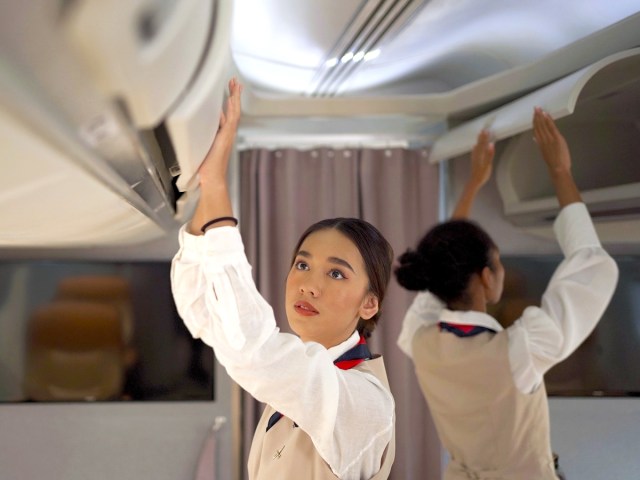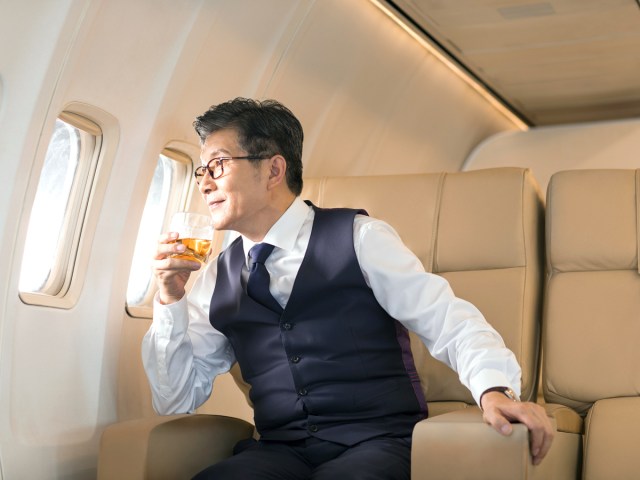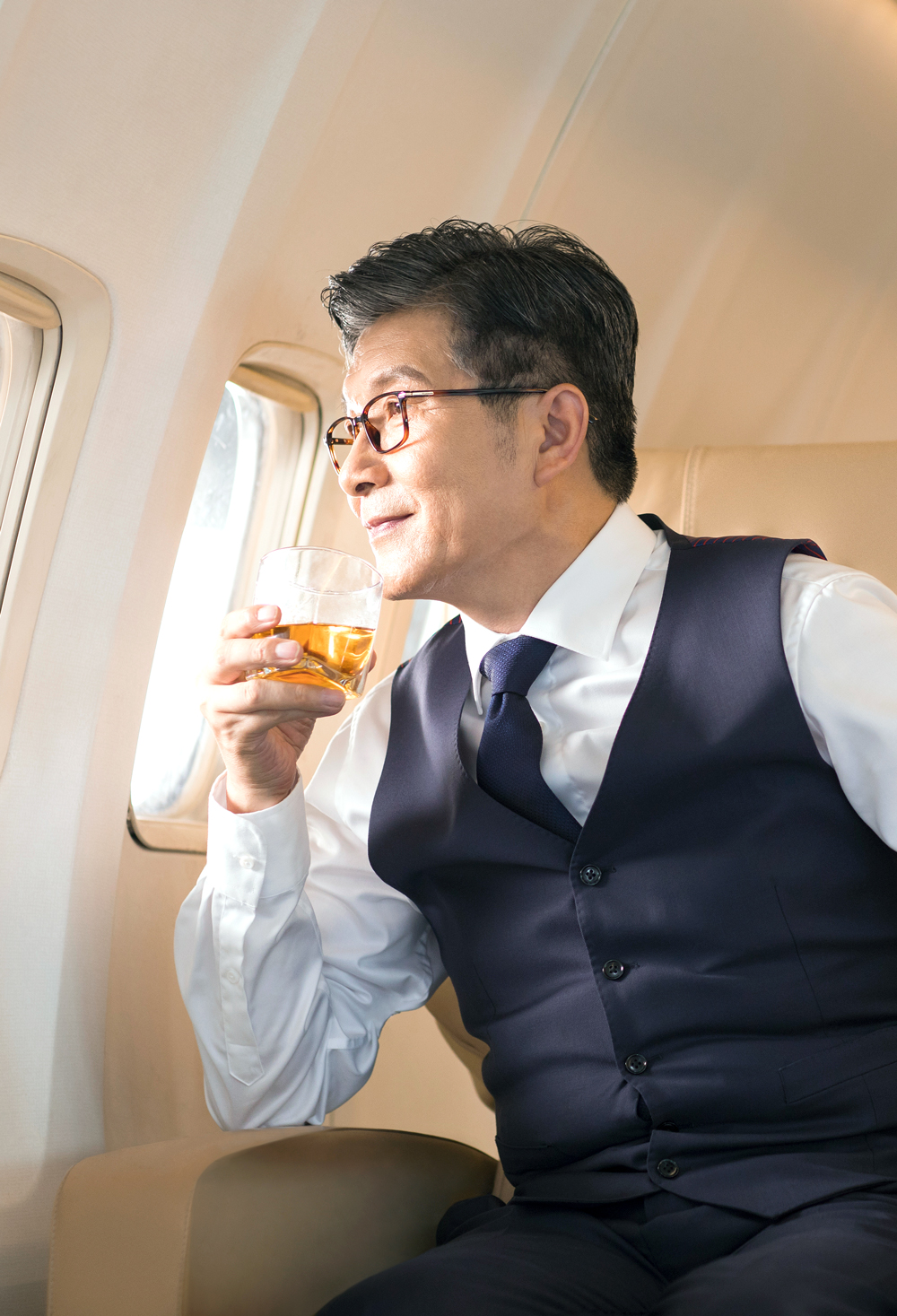Flying first class on an international vacation is a bucket-list dream for many travelers. Or perhaps if you’re extremely lucky, you regularly fly at the pointy front end of the plane. But to many travelers’ surprise, in recent years, first class has become something of a rarity on long-haul international flights. In 2023, Qatar Airways — the Middle East carrier known for its uber-luxe in-flight offerings — became the latest airline to announce that it would stop installing first class seats on its newest airplanes. Does this really spell the end of first class? Find out why some airlines are getting rid of first class seats — and what that might mean for your next trip.
On U.S. Domestic Flights, First Class Isn’t Going Anywhere

First thing’s first: There’s a big distinction between what U.S. airlines have traditionally marketed as “first class” on domestic and short-haul international hops versus first class on long-haul intercontinental flights.
When flying on carriers such as Delta Air Lines or American Airlines domestically or to Mexico and the Caribbean, buying a first class ticket gets you a roomier seat at the front of the cabin with a few extra inches of legroom and recline. You’ll receive perks such as priority boarding and complimentary in-flight meals and alcohol. But typically, business class isn’t offered on these routes — only first class and economy class (sometimes called “main cabin”).
U.S. airlines have noted on recent investor calls that demand for this type of premium product has actually grown since the pandemic and remains exceptionally strong. As a result, these airlines are investing heavily in expanding the first class footprint on many planes and updating their first class cabins to convince more travelers to splurge for the upgrade.
What Is Flying Long-Haul First Class Like?

On intercontinental flights, it’s quite a different scenario. Let’s go back in time to find out why: As jet travel boomed in the 1960s, airlines pulled out all the stops for their most premium cabins, which were traditionally marketed as first class. Passengers willing to pay a hefty price tag could look forward to elevated service from fashionably dressed flight attendants, gourmet meals — lobster, caviar, leg of ham carved next to passengers’ seats — and even onboard cocktail lounges.
In the 1970s, airlines began introducing a cabin between first class and coach called business class. It featured with wider seats that offered about eight to ten extra inches of legroom, improved meals, and more personalized service over economy class. However, in the 1990s, airlines such as Continental (now part of United) and Virgin Atlantic opted to combine the traditional first class and business class products into a hybrid offering that was somewhere in between. (Continental called it BusinessFirst.)
Today, many global carriers still offer a dedicated first class cabin, with their roomiest seats and highest levels of service. But in the decades since, other airlines have followed the lead of Continental and Virgin Atlantic by dropping first class altogether in favor of a much-improved business class cabin. In 2000, British Airways upped the ante for business class by becoming the first major airline to introduce seats that converted into flat beds. As the competition between airlines has heated up, flat-bed seats have now become the standard for business class travel — and some airlines now even offer suites with sliding doors.
Why Many Airlines Are Dropping International First Class Seats

Of the three major global U.S. carriers, both Delta Air Lines and United Airlines have already dropped first class in favor of an elevated business class cabin. Delta calls theirs “Delta One,” while United introduced “Polaris” in 2016. American Airlines has remained the lone hold-out with a true first class cabin. But by the end of 2024, that will no longer be the case.
As reported by Business Insider, in late 2022 American Airlines announced that it would be completely removing its remaining first class cabins, which were already only configured on a small number of aircraft. The airline said first class would no longer exist “for the simple reason that our customers aren’t buying it.” Instead, American is investing in what it calls a new “Flagship Suite” business class. And despite removing first class, the airline is actually increasing the premium seats per plane.
The reality is, with ever-improving business class cabins, airlines have a tough time selling traditional first class. According to Qatar Airways’ CEO, the business class product today “already gives you all the amenities that first class gives you.” He goes so far as to call first class “pointless.” For airlines, those first class seats — which are even roomier than business class — take up valuable real estate in airplane cabins and don’t allow airlines to maximize revenue potential on each flight.
Plus, with changing demand habits in the wake of the pandemic, there are now fewer corporate travelers spending large sums on last-minute first class tickets. Before the pandemic, large corporations were responsible for about half of premium cabin demand, according to Business Insider. These days, premium demand is now being driven by a blend of business and leisure travelers — the latter of whom are typically unwilling to shell out for the significant price difference between first and business class.
The Premium Economy Factor

In the 1990s, airlines such as Eva Air and Virgin Atlantic introduced yet another new class of service that became known as “premium economy.” The product was aimed at travelers looking for an elevated experience over typically cramped economy cabins, but without the budget to upgrade to business or first class. Premium economy offered wider seats, a few extra inches of legroom, and typically better meals and service.
Sound familiar? Indeed, premium economy resembles what business class used to look like when it was first introduced. In a sense, business class has become the new first class, while premium economy is the new business class. Many airlines will also offer a dedicated set of economy class seats with extra legroom, offering travelers even more options to suit their budget.
Which Airlines Still Offer a True First Class Option?

While the trend points in the opposite direction, a handful of airlines remain dedicated to a “true” first class cabin on intercontinental flights. These airlines are typically already known for their high levels of service, and include the likes of Emirates, Air France, Singapore Airlines, Japan Airlines, Lufthansa, and Korean Air.
Many of these airlines have also introduced new, improved cabins in recent years. On Singapore Airlines, for instance, you’ll get a private suite so spacious that there’s enough room for both a reclining chair and a traditional bed. And if you’re traveling with someone, you can even lower the dividers between suites to create an extra-spacious double bed. So, while it’s true that first class is no longer an option on many airlines these days, for those travelers looking for the ultimate splurge, a select few airlines are keeping the tradition alive.
More from our network
Daily Passport is part of Inbox Studio, which publishes content that uplifts, informs, and inspires.
















